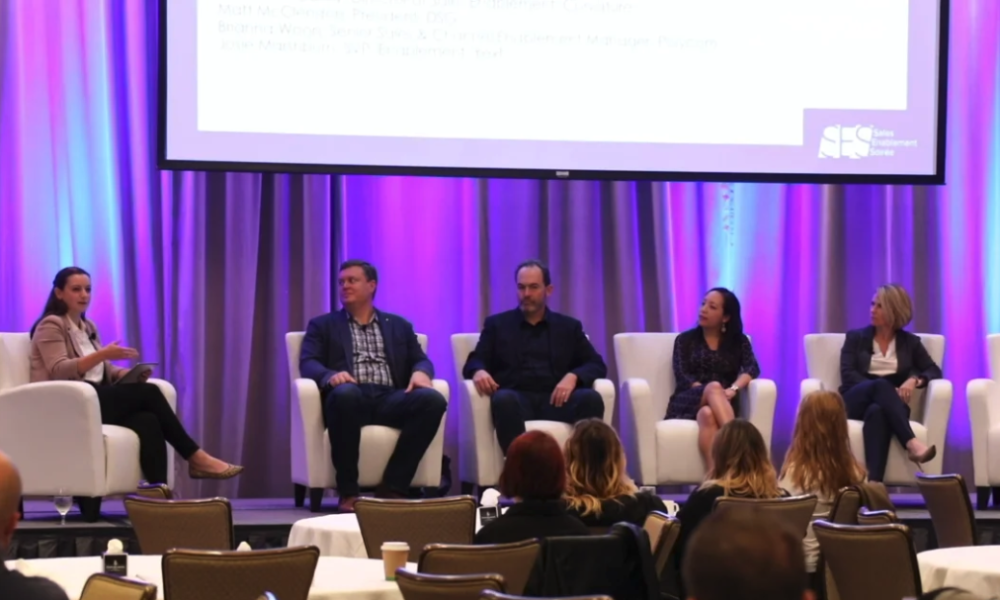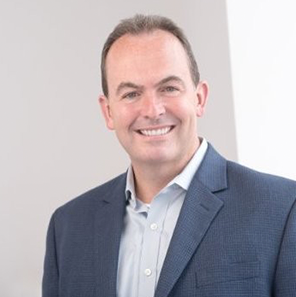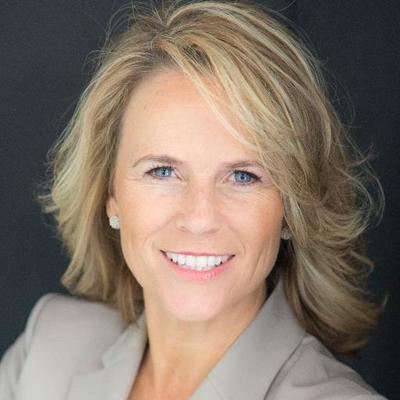Episode 17: Hillary Anderson on Training Tactics to Build Rep Confidence
2.8K Views | 14 Min Read
Shawnna Sumaoang: Hi, and welcome to the Sales Enablement PRO Podcast. I am Shawnna Sumaoang. Sales enablement is a constantly evolving space, and we’re here to help professionals stay up to date on the latest trends and best practices so they can be more effective in their jobs. Our guest today is Hillary Anderson, senior sales enablement manager at Host Analytics. Hillary, it’s great to reconnect with you. Could you take a moment and introduce yourself?
Hillary Anderson: Yeah, for sure. So, my name is Hillary Anderson. I work for a company called Host Analytics. We are in the enterprise performance management space and our tools help companies with their various financial budget processes, forecasting, making sure that we can help them with planning, modeling, consolidating, and reporting. I am a senior sales enablement manager there. I’ve been at the company just shy of two months. Prior to that, I was over at a company called Hired.com. I started in sales there actually and then built our enablement function from the ground up. So that’s kind of how I landed in the enablement world. I was in sales prior to Hired as well, in professional sports, actually.
SS: I love that. Alright, well let’s shift a little bit and focus, just because onboarding is a huge component to a lot of sales enablement initiatives when they’re first coming into an organization, so I would love to hear from you, what are the key components of a successful sales onboarding program?
HA: Best practice sharing is really, really crucial. So, we want to make sure that when our reps come in the door, they know what is best in class at the specific organization. What is the standard way to do things? The less personal things, like finding out what they have to do during their ramp, the better, because that’s going to allow them to really start driving towards their goals quickly. Making sure we have the right tools and content in place to allow them to drive those efficiency gains that I mentioned earlier. Making sure that we have programs in place that are going to give them all of the information that they need, essentially packaged up to be able to start having conversations with customers as quickly as possible. The shorter that we can essentially drive their ramp, the quicker they’re going to be generating revenue.
So, how can we get that information to them in a way that is digestible but then they can then take and execute out in the field independently. Because we also recognize that every new hire is going to need extra support from their manager, extra support from leadership, extra support from their peers, and that does frankly take away time from other aspects of the business. But if we do it in the right way, it’s going to return even more time because that rep is going to be contributing.
How can we make sure that they’re ready to handle objections that they’re going to hear? How can we also help them understand the lay of the land of the business, so that they can go and find answers to a lot of the questions that they have themselves, without having to necessarily figure out who to ask, where to find it, where it lives? How can we make it really, really easy so that they can be as self-sufficient as possible as quickly as possible? I think those are some of the key components of how I think about an onboarding program.
Then, just making sure from day one, we’re building a relationship with every new hire so that they can leverage the partnership within enablement to either get the additional training that they need, or get the piece of content that they wish that they had and maybe had at their last company that they feel like they’re missing. Make sure that we bridge those gaps and connect those tissues as much as possible for all of our new hires.
SS: Excellent, excellent. So, I have a question that I’m going to try to roll into one, but what are the key competencies for sales reps that sales enablement should monitor? At the Sales Enablement Soirée, you mentioned the importance of monitoring behavioral competencies, especially for new reps, things like confidence. So, how can sales enablement: A) monitor and track that? And then B) help reps meet the competencies that the organization is expecting?
HA: I am a firm believer that one of the biggest things that we can drive, as you mentioned, is helping reps feel confident on the phones and confident that they can face whatever they’re going to hear on calls or even in the field when they’re speaking with customers. It’s one that, to your point, can’t necessarily be monitored from a data perspective, which makes it challenging. But frankly, we’re in the business of people in sales enablement, we’re working with the sales field. So, sometimes how they feel, and arguably a net promoter score (NPS), is important because if they don’t feel like they’re getting what they need, again, we’re missing something. We need to kind of understand why that’s happening.
But something like confidence helps us understand: do they feel like they’re prepared to have conversations or have challenges thrown at them from an objection handling perspective, perhaps from a customer? Do they feel like they knew that objection might have already existed? Have they at least heard someone who’s good at handling that objection? Have they heard how they handle it quite yet? Or are they figuring this all out on their own? I like to kind of think about onboarding as a whole as kind of being a padded playground of sorts for our new hires. How can they start playing around in a risk-free – well, not completely risk-free – but a risk-limited environment, so that they can figure things out?
Maybe have people around them, whether it be enablement or leadership or managers, to help get them through some of those challenges. But allow them to kind of stumble and figure things out during that onboarding program so that when they are out and independent, they’re not still challenged and struggling through some of these areas.
I think we figure out how they’re doing from a confidence level in a couple different ways. Number one, it’s having conversations with managers. As enablement practitioners, it’s really important that we have a strong relationship with our sales leaders where we can say, “Hey, how’s so and so doing? How do you think things are going?” Then go to that new hire and check in with them. We should’ve built a relationship from their onboarding and say, “Hey, how are things going? What are you struggling with? Where do you feel really strong?” And see if those things kind of matchup between managers and new hires. And if not, we’ve got to figure out why.
Then, do some digging to understand what they feel like they need that they’re not quite getting. And does that need to be delivered in a one-to-one kind of capacity, or are all the new hires saying, “Hey, you know I’m really, really struggling with understanding how we position against this specific competitor.” And then creating a program, not just for our new hires, but also for everyone, to be able to kind of minimize that knowledge gap that may exist. And then over time we’ll see as they get more and more confident, they’re going to get less and less concerned about stumbling or fumbling through some of the things that any new rep might stumble and fumble through.
The other thing we leverage – we’ll go back to the piece earlier – is we have a tool called Gong that allows us to drop in on the calls that our new hires are having and see how their confidence level sounds. Or, if we can attend a meeting in person, that’s also great. But just get a good feel and actually check in on a consistent and regular basis, both from a virtual standpoint as we’re listening to calls, but also checking in with them one-to-one and having conversations so that they feel like they’re supported. But we also hear it from the horse’s mouth, rather than assuming that they’re fine or assuming that they might be struggling, open up that conversation and build that relationship so that you can have that communication. I think the more communication, the better with our new hires to make sure that they feel supported.
SS: Excellent. And I think as organizations conclude the onboarding process, I’d love to understand how enablement can help kind of improve continuous learning as they go out in the field. I know you mentioned some of the forums by which you do that, but I’d love for you to explain some of the best practices that you’ve implemented to ensure that your reps have that continuous training.
HA: Once a new hire gets through our ramp period, I think some of the metrics that we want to really keep an eye on, especially over time, is what does the time to first deal look like across our different segments? Are we seeing consistency over the year? Or do we see that one new hire group might have a particularly challenging time getting to that first deal? And that gives us benchmarks to kind of gauge each of our new hire groups. Understanding what the revenue contribution from our new reps that are right off of ramp compared to our more seasoned reps, what does that look like?
I think that thinking through what’s their close-deal ratio is important as well. In that first three months, how many opportunities are they creating versus how many are they closing? And over time kind of modeling that out. So, that’s something that we are actually planning to think through from our strategy that doesn’t exist today over at Host, which we’re excited about.
Then, making sure that you have things in place, like certifications, to make sure that standardization is in place, so that everyone has a standard talk track, they have a standard way that they message, a standard way that they demo, and then standard resources to help them be efficient and effective. So, I think that those are good ways to make sure that you’re not just launching a new hire through your initial boot camp or onboarding and then saying, “Hey, good luck.” But you’re checking in over the course of the year as a way to keep everyone growing in the same direction, arguably. Whether that’s a rep, again, that’s been here for four years or a rep that’s been here four weeks. How can we make sure that there are checkpoints where enablement is connecting with the field to make sure that everyone is on the same page and doing things the way that we determined are within our methodology, approach, or best practice?
SS: Excellent. You mentioned the term “plays” earlier. Is that something that you guys are currently building at Host or maybe that you built in a previous company? And how have you gone about structuring those for your reps?
HA: It’s actually really interesting. It’s an area that we’re trying to think through how we can relaunch with a splash: plays. They are something that’s been at Hired for quite a few years, and it’s essentially how the business has gone about making sure that there are a set script of sorts of how we run our sales process and cycles, so that there’s consistency again. Standardization is really, really important.
These plays have been in place. We’ve essentially accumulated a playbook of how we run our business, and different areas where there might be opportunity or areas where we need to be aware of potential pitfalls. Laura and I are really, really passionate about thinking through how we can bring our playbook to life a bit more, and couple those running plays with examples of how they’ve actually worked in the real world. Whether that’s highlighting a success story and the play that was run during that really big deal that was closed so that the rest of the field can hear the story. Hopefully they can be energized and invigorated by it, but also, they can take away a learning perhaps that they can incorporate into their everyday sales process.
So, we’re at a really interesting point. It’s something that we’re doing a lot of discovery around right now. How can we document things that work and even the things that don’t so that we can learn from our peers in a really scalable way? And be able to have that knowledge going forward, regardless of how many years down the road we are.
SS: Thanks for listening! For more insights, tips and expertise from sales enablement leaders, visit salesenablement.pro. If there’s something you’d like to share or a topic you want to know more about, let us know. We’d love to hear from you.















